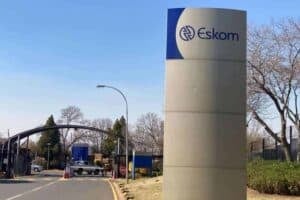The power utility admits years of inadequate maintenance ‘leaves the system vulnerable’, with an ‘alarming’ output of only 56.76% in week one of 2020.

Eskom hit a new record last week when it was only able to produce little more than half of South Africa’s required electricity.
“The week-on-week energy availability factor (EAF) of Eskom’s fleet of power stations dropped to a new record low of 56,76% in Week 1 of 2020, down from 61,82% in Week 1 of 2019. Alarming,” EE Business Intelligence managing director and energy expert Chris Yelland said yesterday on Twitter.
“I don’t think stage 6 likely, though it is indeed possible, but certainly if unplanned breakdowns remain stubbornly at 13,000 MW+ as has been the case for the last three weeks, sometimes rising to 15,000 MW+, and with planned maintenance at about 5,000 to 6,000 MW, and demand rising by 3,000 MW to 28,000 MW to 29,000 MW next week, we could certainly be in for stage 2, 3 or 4 load shedding,” Yelland told The Citizen.
The graph of Eskom’s EAF Yelland posted showed how Eskom’s output has steadily decreased over the years, with its peak output of between 85% and 90% being 2017, also Eskom’s best year since 2016, followed by 2018 and then 2019 at the bottom of the pit.
On Monday, Eskom announced it had lost 13,119MW from the grid, and stated it had “sufficient water at the pumped storage schemes” and had managed to conserve diesel at its open cycle gas turbine (OCGT) generators.
On Tuesday morning, 13,694MW had been lost and Eskom was continuing to work on “replenishing our diesel levels” at its OCGT’s while water levels at the pumped storage schemes were “adequate to supplement the shortage of capacity if required”.
Hours later, stage two load shedding from 1am to 6am yesterday morning was announced with unplanned breakdowns sitting at 13,600 MW.
“Owing to a loss of additional generation capacity, emergency reserves had to be extensively utilised to supplement capacity during the day,” the utility said in a statement.
“Owing to inadequate maintenance over a number of years, the system remains vulnerable to unplanned outages.”
By yesterday afternoon, Eskom announced stage two load shedding after losing 13,543MW from the grid.
With some of the cheapest electricity in the world, Eskom’s “inadequate maintenance” statement is telling as it heads into court next week to try and reclaim the R69 billion Treasury bailout over three years grabbed by the National Energy Regulator of South Africa (Nersa) before the ink dried on the cheque.
“In misappropriating the R23 billion equity injection, Nersa unreasonably ignored the goal of government policy (both as reflected in the EPP and also in the recent statements of the President and Minister of Finance) to progress towards a position in which Eskom is able to ensure a reasonable return,” Eskom chief financial officer Calib Cassim wrote in his founding affidavit.
“As shown above, current government policy regarding support to Eskom is confirmed by the recognition by all of the ratings agencies that Eskom’s tariffs have historically, and continue to be, unrealistically low.”
For its part, Nersa has said the money meant Eskom didn’t need as big a price increase because its operating expenses would have been reduced by the bailout.
“On 15 December 2017, NERSA announced its decision to approve an average increase of 5.23% to Eskom’s tariffs for the 2018/19 financial year,” Cassim noted.
“As a consequence of NERSA’s decision, Eskom’s tariff for the 2018/2019 financial year translated into an average standard tariff customer tariff of 93.79 c/kWh.”
Speaking to Moneyweb, Yelland said the “role of the regulator should shift from the process of setting the prices – in other words, price controls – to ensuring that the market operates efficiently and that there is no collusion between players in the market”.
“We need to move from a monopoly electricity-supply industry to a competitive electricity-supply industry, where competition determines the price and not some regulator,” Yelland said.
What the world is paying
Global electricity prices in 2018 (in dollars per kilowatt hour):
- Germany 0.33 (most expensive)
- United Kingdom 0.22
- United States 0.13
- South Africa 0.09
- China 0.08
- Source: statista.com
For more news your way, download The Citizen’s app for iOS and Android.






